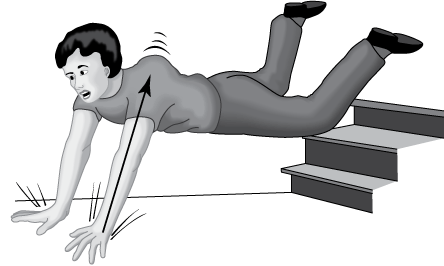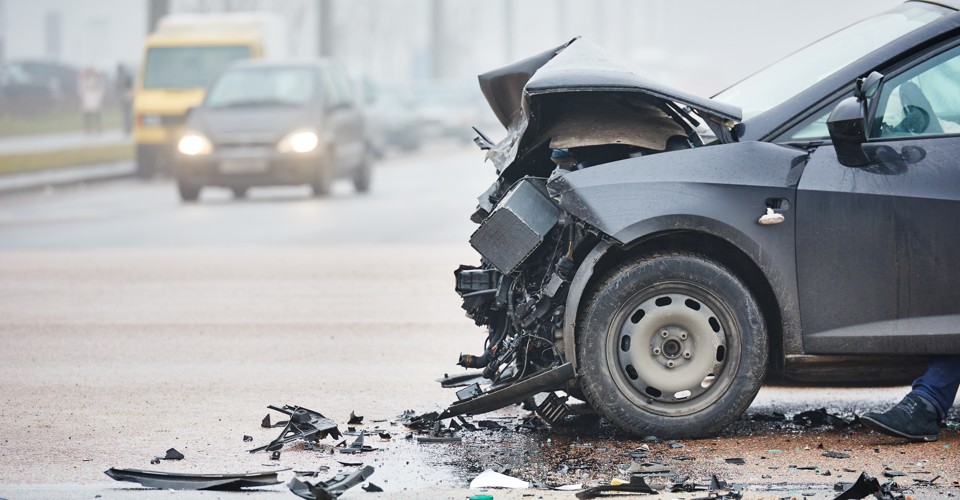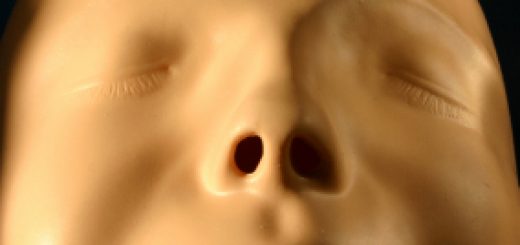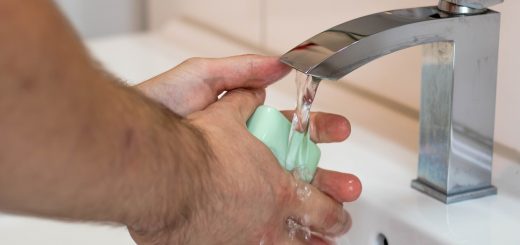Assessing Mechanism of Injury in Trauma
Mechanism of Injury should be assessed before approaching a trauma patient. In assessing the mechanism of injury the first aider / first responder must consider a number of factors and try to piece together what has happened.
Consider the forces involved, direction of travel and impacts the patient has been subjected to, which part(s) of the body are implicated and as a result of this think about what injuries the patient might have sustained. Ask yourself:
- Which underlying organs might be damaged?
- In which direction have forces travelled in?
- What pattern of injury am I expecting?
The law of conservation of energy states that
‘Energy is neither created nor destroyed, but merely changes form’
A patient who falls from standing may put their hand out to save themselves, this is known as a fall on outstretched hand (FOOSH). The force of the impact with the ground may fracture their wrist, but that impact energy may also transmit its way up the arm and fracture the clavicle (collderbone). The energy of the impact with the ground has changed. It hasn’t been lost, but has changed form and transmitted its way up the arm to the clavicle (collerbone).

Assessing the mechanism of injury can give the first aider / first responder an excellent idea of the injuries that might be present in the patient. This will help the first aider / first responder perform a targeted assessment of traumatic injuries and identify life-threatening conditions (e.g: a tension pneumothorax).
Deceleration forces
This is how the patient slows down during an impact or a fall. This can be gradual, which has a lower risk of injury, or sudden which is more dangerous. In any incident there is more than one impact. A common example is a traffic collision. The first impact occurs when one vehicle strikes another vehicle, the second occurs when the patient strikes the seatbelt and the third impact occurs when the patient’s internal organs strike their thoax or abdominal wall. Each of these impacts is at the same speed as the initial impact and the forces are transmitted from one impact to the next.

In the above example there is a risk of internal organs being torn, ruptured or bruised. All of these can cause severe internal haemorrhage which may not be visible on an initial primary survey. This is why it is vitally important to look at, and understand what has happened to the patient and consider what injuries the patient may have suffered.
Rotational forces
This is where a patient has been involved in an impact that has caused them to turn sharply, or turn upside down. These forces can often cause a shearing effect, which may cause spinal injury by turning the head at a different rate to the body. Internal organs may also be affected by these shearing forces which pull blood vessels or organs from fixed points, or twist and stretch them, causing them to tear. Typical examples of rotational forces are car collisions where the car spins or rolls over or falls from horses, motorcycles or bicycles, where the patient might twist as they fall, or twist upon impact with, or after striking the ground.
Blunt trauma
Blunt trauma is caused when an object strikes the patient, but doesn’t puncture the skin. Typical incidents are motor vehuicle collisions, (typically: car v. pedestrian or a side impact car v. car) falls from horses, motorcycles, bicycles etc. or assaults. The ‘blunt’ object can be a car, the ground, a fence post, cycle handlebars or in cases of assault, an object such as a baseball bat.
The force from blunt trauma pushes the internal organs aside and squashes them into a smaller space. This may cause the organs to tear or burst. As the blunt object releases its force, everything returns back to normal. This effect is called temporary cavitation.
Penetrating trauma
Penetrating trauma is caused by an object puncturing the skin. This can be a knife, fence railing, bullet or any other sharp object. A sharp object can make a lasting cavity inside the body as it tears its way through tissues and organs. This effect is called permanent cavitation.
Effects on organs
The body’s organs respond differently to high impact trauma. Hollow organs tend to burst, and solid organs tend to leak.
Hollow organs:
- Intestines
- Stomach
- Bladder
- Gallbladder
- Uterus
- Blood vessels
Solid organs
- Liver
- Pancreas
- Spleen
- Kidneys
Patterns of injury
When someone falls from a horse, they are likely to put their arm out to save themselves. This means that the force of the impact is transmitted through their arm, and a fractured wrist, fractured or dislocated elbow or fractured clavicle (collerbone) are all potential injuries.
In a side impact car accident forces may cause spinal injury, pelvic or femoral injury on the side of impact. Reading an incident scene as described above allows the first aider / first responder to estimate what the injuries might be by establishing the pattern of injury. This is known as ‘reading the wreckage’.





